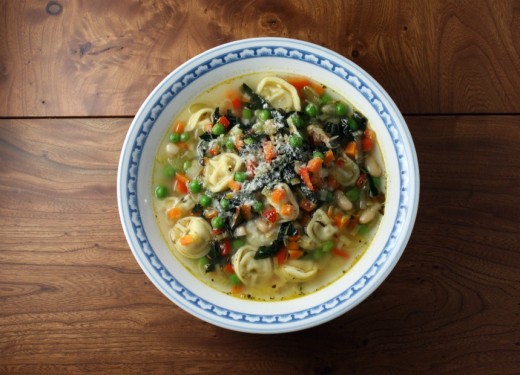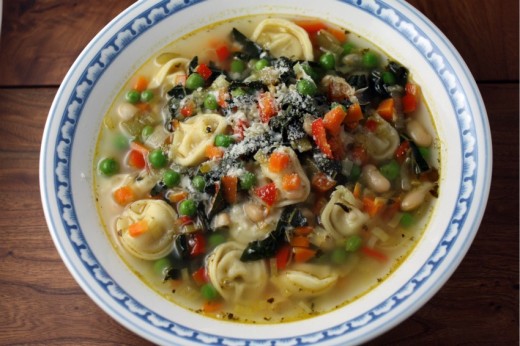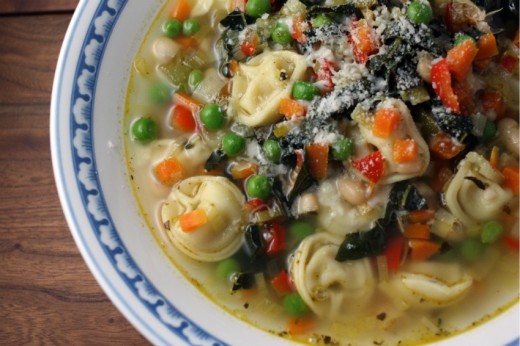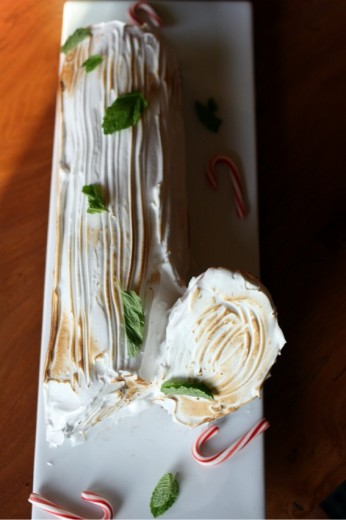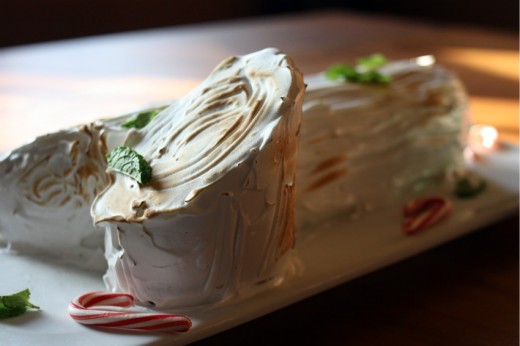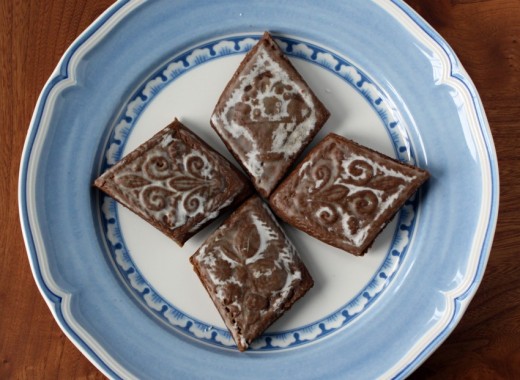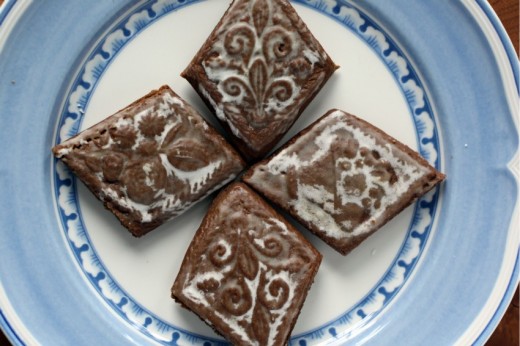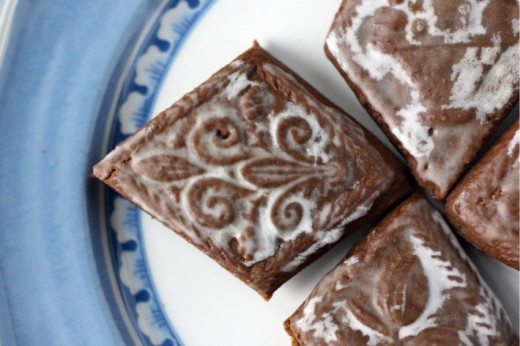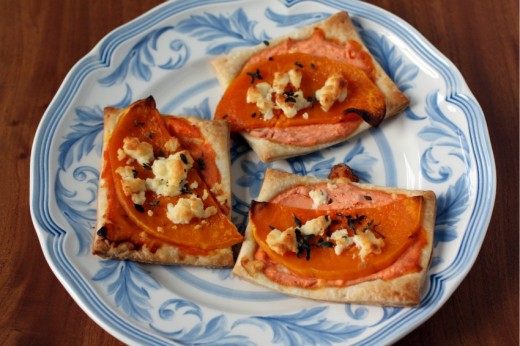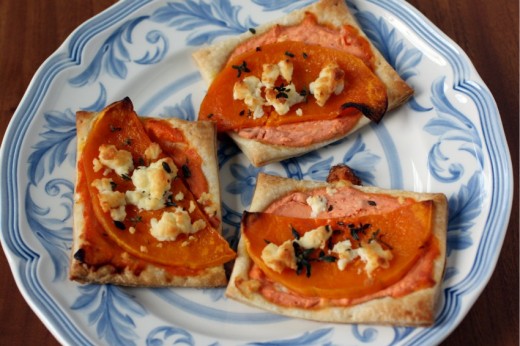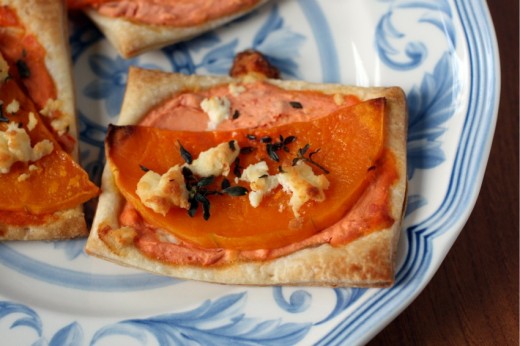Randy and I used to get Thai food almost every Friday night for dinner. Or at least every Friday night that wasn’t a date night. It was our wind-down from a long week, a break from cooking for me, and something we both enjoyed. Seattle has great Thai food and there are five or six places nearby that we like. After a few years of this tradition, I started to feel like the food tasted great but I could just see how unhealthy it was. The oil slick in the bottom of the noodles dish, the coating on my tongue from the curry. Tasty but not healthy. And so, we opted for other food on Friday nights, namely my cooking.
Earlier this week, Graham had surgery for a hernia. It sounds bad but the truth is that children recover surprisingly quickly from this type of surgery. He has had one other operation, an umbilical hernia repair. This was an operation to repair his belly button which was sticking out more than normal – really a cosmetic procedure. So now, at the grand old age of seven, he has had the same number of surgeries as his 41-year old mother. (I’ve had 2 c-sections.)
Because the doctors and nurses were so blasé about the surgery and how quickly it would be over and how well he would do, I planned to make dinner. But of course they did not start on time and the operation took an hour instead of a half, and they kept him in recovery longer because he was having pain. (The recovery room nurse asked him how he was feeling and he said, “I would feel better if my penis didn’t hurt so much.”) I got to go back in the OR with him to hold his hand while they put him under with strawberry scented gas and watching his little eyes flutter closed broke my heart. It became clear, on the eventual drive home, that take-out was our dinner option. It had been so long since our last Thai dinner that I thought it sounded good. And it was good. But after a few bites, I remembered why we stopped our regular practice. I carefully picked my noodles out of the slick and decided that this was a once in a while treat.
I love those flavors and I love that food, but I don’t love the grease or the stomach ache I often get after eating it. I have an ever rotating line up of Asian noodle dishes that I love and I’m happy to add this Heidi Swanson recipe to the roster. Normally I use rice noodles but I appreciated a bit more heft from the wheat based udon noodles in this dish and the sauce was drinkable. Seriously. I tweaked a bit. I added cilantro to the cooked sauce, I sautéed the shallots to almost burnt for the garnish because I don’t like members of the onion family to be raw. I added a bit less liquid and then second-guessed myself. All the things you do with a good recipe to make it more to your taste. Delicious.
One Year Ago: Hearty Beans and Rice and Butternut Squash and Cashew Curry
Two Years Ago: EggNog Pound Cake with Crystal Rum Glaze and Chickpea, Lentil, and Vegetable Stew
Three Years Ago: Penne with Greek-Style Vegetable Marinade
Big Curry Noodle Pot
Adapted from Super Natural Cooking
Serves 3-4
2 tbsp. coconut oil or vegetable oil, divided
2 medium shallots, sliced into thin rings
Kosher salt
8 ounces dried Asian style wide noodles, such as udon
1 onion, chopped
2 garlic cloves, minced
2 tsp. Thai red curry paste
12 ounces extra-firm tofu, cut into thumb-sized slices
1 14-ounce can coconut milk
1½ cups water
2 tsp. ground tumeric
2 tbsp. shoyu sauce, or other soy sauce
1 tbsp. light brown sugar
Juice of 1 lime
¼ cup peanuts, chopped
½ cup cilantro leaves, chopped, divided
Place a large saucepan over medium-high heat. Add 1 tablespoon of the coconut or vegetable oil, then add the shallots. Allow to cook undisturbed until golden brown on the underside, about 3 minutes. Flip over and cook for another 1-2 minutes, until very brown. Tip out onto a paper towel lined plate and season with salt. Set aside.
Return saucepan to the burner and reduce heat to medium. Add the other tablespoon of oil and then add the onions. Cook for five minutes, then add the garlic and red curry paste. Mash the paste around in the pan to distribute it evenly. Cook until nice and fragrant, just a minute or two. Add the tofu and gently stir until coated with the curry paste. Stir in the coconut milk, water, tumeric, soy sauce, and sugar, bring to a simmer, and simmer gently until the sauce gets nice and thick, about 20 minutes. Stir in half the cilantro leaves and the lime juice.
Meanwhile, cook the noodles in plenty of salted water according to the package directions. When they are just shy of done, use tongs to transfer them directly to the saucepan with the curry sauce. Stir in the lime juice. To serve, heap big piles of noodles into individual bowls and top with a generous ladle of the sauce. Top with peanuts, shallots and the remaining cilantro.
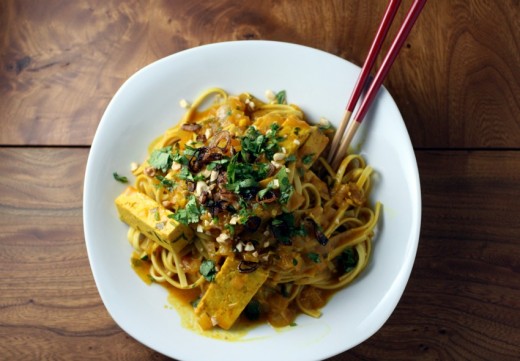

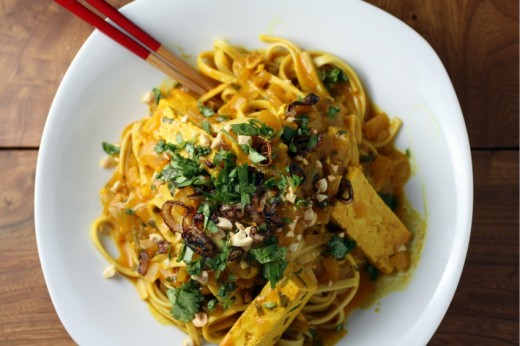
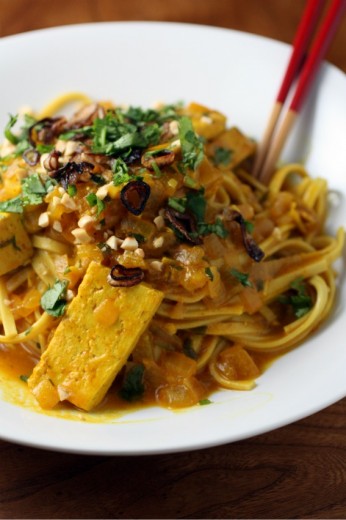

 Share
Share